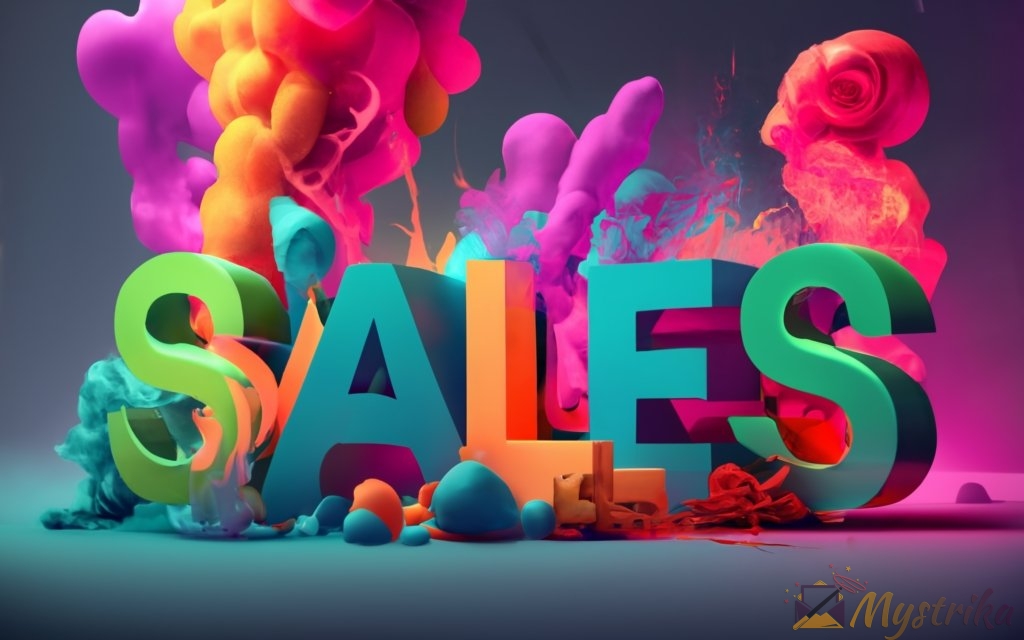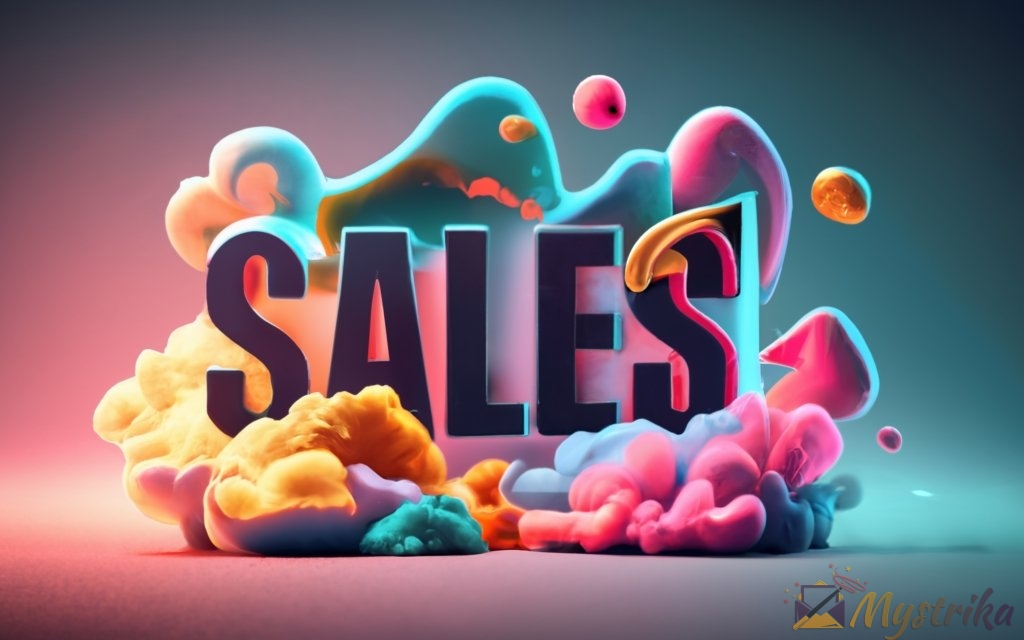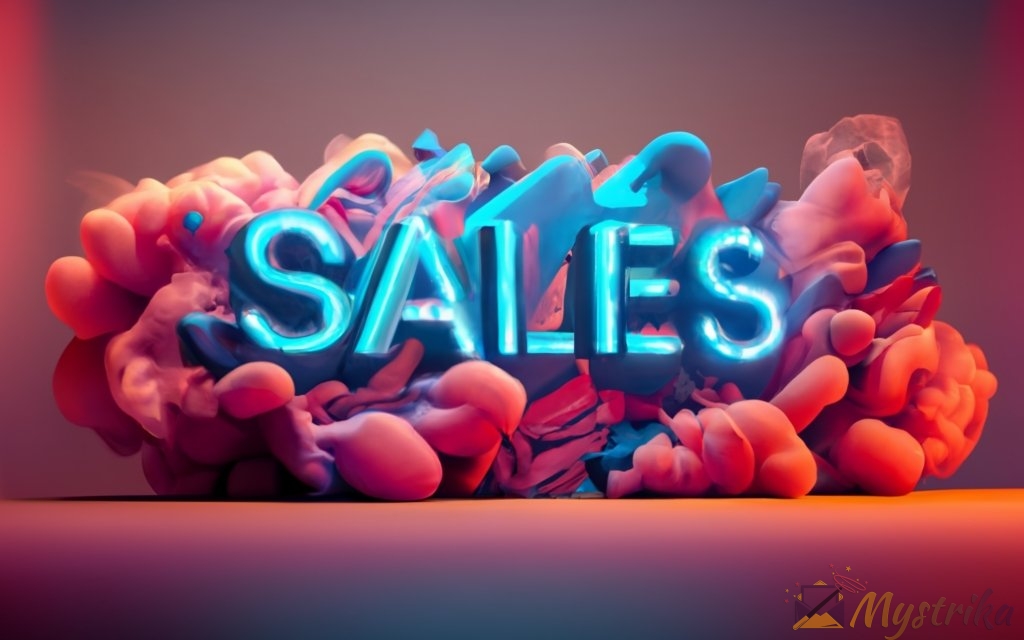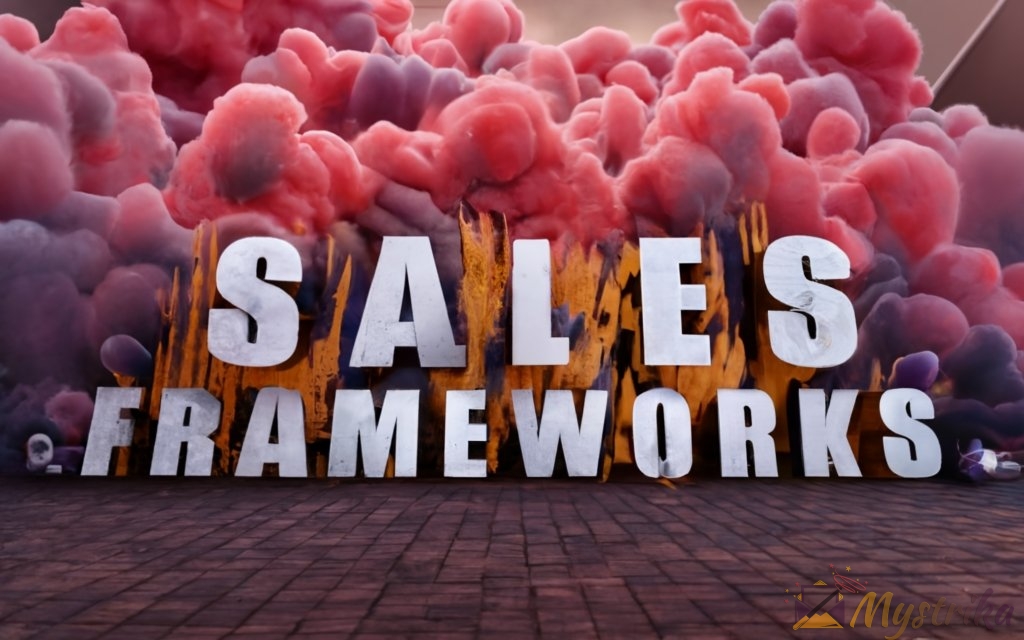Tired of losing out on deals? Struggling with long sales cycles? It’s time to level up your sales game.
Discover the proven frameworks used by the sharpest sales pros to systematically convert more prospects. Learn how sales rockstars at the top companies structure, manage, and close complex deals predictably and rapidly.
Whether you’re a sales newbie or a grizzled veteran, these science-backed methodologies provide a blueprint to exceed your quotas and outperform the competition.
In this comprehensive guide, gain access to the cutting-edge sales frameworks dominating today’s marketplace – and actionable advice for leveraging them successfully. Now you can deploy the same repeatable formulas, best practices, and data-driven insights as the industry’s top rainmakers.
Buckle up as we equip you with the frameworks that enable leading sales teams to operate as finely tuned revenue machines. Your dream deals await!
What are Sales Frameworks and Why are They Important?
Definition and Overview of Sales Frameworks
Sales frameworks are structured approaches, processes, and models that guide sales teams through the various stages of the selling process. They provide a standardized, repeatable methodology for defining sales strategies, qualifying leads, engaging buyers, handling objections, closing deals, and everything in between.
In simple terms, sales frameworks act as playbooks that outline the optimal steps sales reps should take to convert prospects into customers. They capture the collective knowledge and best practices gleaned from both research and experienced sales professionals.
Some examples of popular sales frameworks include:
- SPIN Selling – Focuses on asking the right questions to uncover needs.
- MEDDIC – Prioritizes metrics, economic drivers, and decision criteria.
- BANT – Qualifies prospects based on budget, authority, need and timeline.
- Challenger Sale – Models the challenger relationship style.
- Sandler – Builds rapport by having prospects “chase” the sale.
The frameworks provide structure, sequencing, and boundaries for sales interactions. They help reps master techniques like effective questioning, value positioning, relationship-building, and resolving objections systematically.
Well-defined frameworks:
- Codify the collective knowledge of high performers into repeatable systems.
- Shorten the learning curve for new sales reps.
- Reduce the variability between different reps’ approaches.
- Improve sales productivity, pipelines, and forecasting.
- Optimize content and messaging across the buyer’s journey.
In short, sales frameworks allow organizations to scale and achieve consistency in their sales execution across markets, product lines, territories, and channels. The top performers may deviate slightly from frameworks to adjust their style, but the foundational processes remain consistent.
Benefits of Using Sales Frameworks
Adopting proven sales frameworks provide numerous benefits:
1. Increased Win Rates
Frameworks encapsulate effective sales strategies into a methodology designed to convert more leads. Structured processes for qualifying, engaging, and closing leads systematically boost sales results.
2. Shorter Sales Cycles
By guiding reps through the fastest path to revenue, frameworks can significantly accelerate sales cycle lengths. Streamlined cycles mean more closed deals.
3. Better Forecasting
Standardized sales processes driven by frameworks lead to enhanced pipeline visibility and forecast accuracy. Reliable forecasts enable leadership to make informed strategic decisions.
4. Greater Scalability
Frameworks replicate successful selling DNA across reps and teams. This drives scalability as organizations expand into new segments and territories.
5. Effective Onboarding
Onboarding new reps is faster and easier with frameworks. Instead of reinventing approaches, they can apply proven techniques day one.
6. Consistent Customer Experience
Customer interactions are optimized through standardized sales processes defined by frameworks. This consistency enhances the customer experience.
7. Effective Territories
Framework adoption helps managers optimize territory design and account assignments for increased productivity.
8. Enhanced Coaching
Frameworks give managers an end-to-end process to observe, coach, and measure reps on. They identify strengths, gaps, and training needs.
9. Continuous Improvement
The structured processes enabled by frameworks generate data. This data offers insights to continuously refine strategies and tactics.
10. Competitive Advantage
Finally, frameworks provide a uniquely customized and efficient sales motion. This powerful competitive edge makes winning more accounts easier.
How Frameworks Help Sales Teams Succeed
There are several ways structured frameworks set sales teams up for success:
- Common Language – Frameworks facilitate communication of best practices using well-defined stages and terminology.
- Specialization – Frameworks allow reps to specialize and master specific steps in the sales process.
- Focus Areas – Managers can identify developmental areas and provide tailored coaching around framework stages.
- Team Alignment – With the entire team utilizing an integrated framework, activities become more coordinated.
- Predictive Indicators – Frameworks define metrics, guideposts, and signals for tracking deal progress.
- Reduced Uncertainty – Standard workflows mean more predictable outcomes, steady sales, and more dependable forecasting.
- Call Calibration – Reps can listen tosample framework calls to self-calibrate their approach and skills.
- Objectivity – Data-driven framework milestones provide unbiased indicators of performance for evaluations.
- Continuous Evolution – Iterating frameworks based on successes, losses, and metrics keeps strategies fresh.
With aligned sales frameworks across the revenue engine, organizations operate as cohesive, high-powered growth machines. The structure, synchronization and specialization enabled by frameworks provide the building blocks for optimized and consistent sales execution.

Types of Sales Frameworks
There are several categories of sales frameworks, each designed to optimize specific steps in the sales process. Understanding the different types of frameworks helps teams select the right ones to implement.
The major framework categories include:
Qualification Frameworks
Qualification frameworks help sales teams effectively identify and prioritize high-potential prospects worth pursuing. They define criteria to evaluate fit, needs, and revenue potential.
Popular examples include:
BANT
The BANT framework assesses prospects based on:
- Budget – Do they have budget for this type of solution?
- Authority – Does the prospect have decision-making authority?
- Need – Does the business have a clearly defined need?
- Timeline – What is the expected purchasing timeline?
Prospects that meet these criteria are sales-qualified leads to invest in further.
ANUM
ANUM adds two more qualifying factors on top of BANT:
- Authority – Decision-making authority?
- Need – Genuine solution needs?
- Urgency – Sense of urgency to solve problem?
- Money – Budget availability?
It helps gauge a prospect’s willingness and ability to buy quickly.
CHAMP
The CHAMP framework evaluates:
- Challenges – Main pain points and challenges.
- Authority – Level of decision-making authority.
- Money – Budget and willingness to spend it.
- Prioritization – How high a priority is this initiative?
CHAMP helps determine the prospect’s readiness to purchase.
These qualification frameworks ensure sales reps do not waste time on unqualified leads.
Consultative Selling Frameworks
Consultative selling frameworks focus on guiding sales reps to engage prospects through targeted questioning and value positioning. The goal is consultative conversations that uncover buyer needs.
Examples include:
SPIN
The SPIN framework centers on four types of questions:
- Situation – Background context questions.
- Problem – Questions uncovering pain points.
- Implication – Impact of the problem questions.
- Need-payoff – Value positioning questions.
This questioning flow naturally leads prospects to realize they have a need.
MEDDIC
MEDDIC ensures reps uncover the key details to customize pitches:
- Metrics – Success metrics for the prospect.
- Economic Buyer – Decision-maker with budget authority.
- Decision Criteria – Factors influencing choice.
- Decision Process – Steps in decision-making process.
- Identify Pain – Main issues they face.
- Champion – Internal advocate for solution.
This drives a metrics-based, tailored sales approach.
These frameworks facilitate value-focused, consultative conversations.
Account Planning Frameworks
Account planning frameworks help sales teams strategically penetrate and expand key accounts. They define the steps to manage territory plans and customer relationships.
Examples include:
Ideal Customer Profile (ICP)
ICPs paint a detailed portrait of best-fit target accounts with:
- Firmographics – Industry, size, location etc.
- Technographics – Tools, tech stack, processes used.
- Challenges – Pain points they face.
- Values – What they prioritize in solutions.
This focuses efforts on qualified accounts only.
TAS
TAS stands for Target Account Selling and involves:
- Targeting – Selecting priority accounts with potential.
- Access – Getting access to key decision-makers.
- Sell – Crafting compelling value propositions for the account.
TAS provides an actionable approach to penetrated named accounts.
These frameworks allow teams to pursue strategic account growth.
Sales Process Frameworks
Sales process frameworks map the end-to-end stages that prospects move through on their buyer’s journey with the vendor. The steps guide reps to advance opportunities through the pipeline effectively.
Examples include:
Sales Funnel
The sales funnel framework outlines the typical sales progression:
- Leads – Unqualified prospects.
- Marketing Qualified Leads (MQLs) – Prospects that engage with content.
- Sales Qualified Leads (SQLs) – Prospects that sales vetted.
- Opportunities – SQLs turned into pipeline opportunities.
- Customers – Closed won deals.
This sequential model provides pipeline structure.
Sales Cycle Model
Common steps in the sales cycle include:
- Prospecting
- First contact
- Qualification
- Meeting/demos
- Proposals
- Negotiation
- Close
Defines the customer journey with sales.
These frameworks break down the sales process into defined phases.
Sales Strategy Frameworks
Strategic sales frameworks guide high-level planning, messaging, and market strategy. They influence portfolio strategy, competitive positioning, and value messaging.
Examples include:
Blue Ocean Strategy
Blue ocean strategy involves:
- Identifying uncontested markets.
- Creating new value propositions.
- Making competitors irrelevant.
This facilitates value innovation and new customer segments.
Challenger Sale
The Challenger Model profiles sales reps as:
- Relationship builders – Rapport focused.
- Hard workers – Diligent and persistent.
- Lone wolves – Independent and self-sufficient.
- Problem solvers – Quick fixes.
- Challengers – Insight-driven, value focused.
It strategically models the challenger approach.
Strategy frameworks shape sales targeting, positioning, and messaging.
This wide range of framework categories provides options for any selling scenario. Holistic sales success requires utilizing different types of interlocking frameworks across the revenue engine.

Key Sales Frameworks Explained
While there are a wide variety of sales frameworks, a few proven models are used extensively across many organizations. These established frameworks offer best practices that optimize different parts of the selling process.
Let’s explore some of the most impactful frameworks in detail:
SPIN Selling Model
Developed by Neil Rackham in the 1980s, the SPIN selling methodology focuses on sales questioning techniques. SPIN stands for:
- Situation questions
- Problem questions
- Implication questions
- Need-payoff questions
SPIN provides a structured approach to customer interactions. Sales reps:
- Ask situational questions to understand the customer’s current state.
- Use problem questions to uncover the customer’s pain points.
- Help the customer see the implications of this problem going unresolved.
- Introduce the solution and highlight the value or payoff it will provide.
This questioning flow helps diagnose the customer’s needs and naturally leads them to realize that they require the solution.
Studies show top performers ask significantly more SPIN questions compared to average reps.
Key Stats:
- SPIN adopters have 21% higher win rates.
- Framework improves sales results by 19% on average.
SPIN transforms sales conversations from superficial feature dumping to needs-based dialogues that compel the customer to buy.
MEDDIC Framework
MEDDIC helps sales teams win complex deals by focusing on the key details needed to build an airtight case for the solution. MEDDIC stands for:
- Metrics – Success metrics important to the customer.
- Economic Buyer – Person with budget authority.
- Decision Criteria – Factors influencing the decision.
- Decision Process – Steps in the approval process.
- Identify Pain – Customer’s issues and pains.
- Champion – Internal advocate for the solution.
Equipped with this information, the MEDDIC framework enables reps to have meaningful conversations that address the customer’s needs and constraints. Reps can craft truly customized pitches tailored to what matters most to the prospect.
Results Achieved:
- Companies using MEDDIC close 40% more deals on average. [Source: CSO Insights]
- Win rates for six and seven-figure deals improves by over 15%. [Source: Sales for Life]
With MEDDIC’s insight-based selling approach, sales teams consistently win large, complex accounts.
BANT Qualification Framework
BANT offers a simple but effective checklist for qualifying leads:
- Budget – Does the prospect have sufficient budget?
- Authority – Is the prospect the decision-maker?
- Need – Does the prospect have a clearly defined need?
- Timeline – What is the prospect’s purchase timeline?
BANT ensures sales reps only invest time in qualified, high-potential leads. Research shows prospects that meet at least 3 out of the 4 BANT criteria are 5x more likely to close.
This framework stops teams from wasting effort by identifying low quality leads early. High standards of lead qualification, combined with tight SLAs, are key to sales productivity.
Pain-Chain Framework
The pain-chain framework helps reps structure discovery conversations to fully understand prospects’ problems. It involves identifying:
1. Primary Pains – The core challenges a prospect faces.
2. Impact – How those pains negatively impact the business.
3. Causes – Reasons those problems occur.
4. Current Solutions – Existing workarounds and solutions attempted.
5. Desired Outcomes – What they hope the ideal solution would achieve.
This framework provides a sharp focus on the prospect’s specific difficulties vs generic questions. Mutual understanding of the prospect’s situation makes it easier to position solutions that resolve their issues.
Benefits:
- Shortens discovery conversations by 67%. [Source: Gong]
- Drives proposal acceptance rates 22% higher. [Source: SalesHacker]
Pain-chain selling equips teams to hold meaningful value conversations centered on resolving buyer struggles.
Challenger Sales Model
The Challenger sales model classifies sales reps into 5 styles based on their commercial behaviors:
Relationship Builders – Build rapport and work harmoniously with customers.
Hard Workers – Dedicated and follow prescribed sales processes diligently.
Lone Wolves – Independent and self-sufficient in driving deals.
Problem Solvers – Reactive and focus on quickly resolving issues.
Challengers – Proactively share insights to build value and alignment.
Research by CEB found Challenger reps outperform all other styles, closing deals 7x more frequently on average. Challengers teach customers and tailor messaging focused on commercial outcomes.
This model provides a blueprint for the attitudes and strategies characteristic of elite sales professionals. Organizations can coach their teams to adopt the Challenger approach or recruit reps exhibiting the style.
These proven frameworks form the scaffolding of successful sales execution for thousands of sales teams worldwide.

How to Choose the Right Sales Framework
With so many framework options, sales leaders need a systematic process for selecting the right ones to implement.
Follow these best practices when deciding which sales frameworks to standardize on:
Align with Sales Process Stages
First, examine your current sales workflow and map out all the key stages prospects progress through.
Then, identify the frameworks that align with each phase:
- Prospecting: Ideal Customer Profile (ICP)
- Lead scoring: ANUM, BANT
- Initial meetings: Pain-Chain, SPIN
- Evaluation: MEDDIC, Value Selling
- Negotiation: Late-stage MEDDIC
- Expanding Accounts: TAS (Target Account Selling)
Choose frameworks that plug into the gaps or bottlenecks in your sales process for maximum impact.
Consider Product/Service Complexity
The complexity of your offering also determines suitable frameworks:
- Commodities or low consideration purchases: Spin, Challenger Model
- SaaS/subscription: Value Selling, SPIN, Pain-Chain
- High-ticket or enterprise sales: MEDDIC, SPIN, Challenger
- Long sales cycles: SPIN, Pain-Chain, MEDDIC
- Consultative selling: SPIN, Pain-Chain, Value Selling
Align frameworks with the level of complexity, deal sizes, sales cycles, and buyer education required.
Factor in Buyer Personas and Journeys
Frameworks also need to map to the customer’s journey. Assess:
- Buyer personas – Technical buyers may prefer feature-focused frameworks, while business roles like CFOs and CEOs need value-based frameworks.
- Buying stages – Early-stage buyers need more education so insight-selling frameworks like Challenger are ideal.
- Switching costs – High switching costs call for more consultative frameworks like SPIN or Pain-Chain selling.
Choose frameworks that align with each persona’s priorities at every buying stage.
Assess Sales Team Strengths and Weaknesses
Analyze the skills of your sales team to identify gaps.
Common needs frameworks can address:
- Inconsistent qualifying – Implement a solid qualifying framework like ANUM or BANT.
- Poor discovery skills – SPIN or Pain-Chain selling to probe needs.
- Pitching vs problem-solving – Adopt MEDDIC or Value Selling.
- Relationship over results focus – Introduce Challenger Model behaviors.
Address skill deficiencies by implementing frameworks strong in those areas.
Test and Iterate Based on Data and Results
Pilot frameworks with a few teams and compare metrics:
- Win rates
- Sales cycle length
- Level of effort
- Customer satisfaction
- Expansion revenue
Refine your framework criteria based on the data before rolling it out further.
Also evolve frameworks continuously through incremental improvements driven by results, rep feedback, and changes in market dynamics.
Choosing sales frameworks is an iterative process. Take an agile, customer-centric approach by deploying and refining frameworks rapidly.
With the right frameworks mapped to your unique sales workflow, teams will execute deals systematically and efficiently. Frameworks provide the playbook for success.

Best Practices for Implementing Sales Frameworks
The most effective sales frameworks fail if not rolled out properly. Follow these best practices to drive successful adoption:
Get Executive Buy-In
Like any major business initiative, frameworks need C-suite sponsorship. Make a case to executives highlighting:
- Business benefits – Increased revenue, larger deals, improved productivity and scalability.
- Supporting data – Hard metrics and case studies proving the framework’s impact.
- Competitive advantage – How it will differentiate your sales approach.
- Costs – Required investments and change management resources.
Secure executive commitment to funding the launch and being patient with results.
Train Sales Team on Framework
Thorough training is essential to drive consistent adoption. Take a multi-pronged approach:
1. Classroom Workshops
Conduct interactive classroom sessions explaining:
- Framework fundamentals
- Aligning with current sales process
- Roleplays to experience framework in action.
2. Online Training
Reinforce with microlearning video content about the frameworks anytime on mobile.
3. Coaching
Managers observe live sales interactions and provide coaching on applying the framework.
4. Certification
Evaluate team’s understanding through certification assessments and scorecards.
Gradually ramp reps from awareness to proficiency to mastery in utilizing the framework.
Develop Supporting Materials and Tools
Create materials that promote framework adherence including:
- Cheat sheets – Quick reference guide with frameworks steps.
- Templates – Email, call, objection handling, proposals, and other templates aligned with the framework.
- Battlecards – Account planning one-pagers with target personas, value props, and approaches.
- Scripts – Sample discovery questions, value positioning statements, and pitch language.
- Assessments – Quizzes to check framework knowledge comprehension.
Tools reduce the burden on reps learning new frameworks.
Track Framework Usage and Results
Leverage technology to monitor adoption:
- CRM data – Activity and pipeline metrics linked to framework stages.
- Call recording – Listen for framework usage on customer calls using conversation analytics.
- Surveys – Ask customers about effectiveness of framework-focused interactions.
Align sales enablement KPIs like certification rates, content consumption, and manager assessments to framework usage. This data quantifies adoption levels across the team.
Refine and Evolve Framework Over Time
Once rolled out, continue honing the framework:
- User feedback – Incorporate suggested improvements from end-users.
- Market changes – Adapt framework for new buyer behaviors, products, competitors.
- Performance data – Enhance low-scoring stages based on conversion rates.
- Technology integration – Incorporate supporting tools that facilitate usage.
- Monitoring impact – Track KPIs to validate framework’s effectiveness.
Refresher training and certifications will be key for major framework updates.
With a structured approach and continuous optimization, sales frameworks become engrained across the revenue engine to accelerate growth.

Mistakes to Avoid with Sales Frameworks
When implementing sales frameworks, organizations often make these common missteps that derail success:
Implementing Too Many Frameworks
In an attempt to cover all scenarios, some organizations adopt too many frameworks simultaneously. This causes confusion and ineffective utilization.
Better Approach:
- Start with just 1 or 2 foundational frameworks like SPIN selling or MEDDIC.
- Once mastered, gradually layer on complimentary frameworks that plug gaps.
- Limit the number of active frameworks to only those delivering clear ROI.
- Retire outdated frameworks to keep focus on proven models.
Consolidate frameworks over time for maximum mindshare and utilization.
Failing to Get Adoption from Sales Team
Without proper change management, user adoption suffers. Reps view frameworks as administrative burdens vs helpful sales tools.
Better Approach:
- Co-create frameworks with frontline sales input to boost buy-in.
- Highlight benefits of frameworks that resonate with rep pain points.
- Incentivize framework usage through contests, certifications, and rewards.
- Gather continuous feedback from users to improve framework experience.
Drive adoption through participation, communication, and reinforcement.
Not Customizing Frameworks for Your Business
Some organizations implement generic frameworks without tailoring them to their process or offerings. But one-size-fits-all models fail to drive adoption.
Better Approach:
- Adapt frameworks to match company values, tone, and voice.
- Incorporate the ideal sales workflow at your organization.
- Integrate relevant products, solutions, assets, and content.
- Adjust for industry-specific terminology, metrics, and buyer needs.
- Refine regularly based on rep feedback and customer interactions.
Customization boosts relevance, ease of use, and results.
Using Frameworks Inconsistently
Leaving framework usage up to individual reps results in widespread misuse and cherry-picking components. This causes process fragmentation across teams.
Better Approach:
- Mandate framework training and certification for all reps.
- Monitor usage levels through manager assessments and customer surveys.
- Share success stories to reinforce best practices.
- Automate frameworks within CRM and sales engagement workflows.
Standardization, not optionality, ensures consistency at scale.
Not Reviewing Data and Adjusting Frameworks
Static frameworks fail to evolve despite changes in the market and business. This causes lower ROI over time from outdated approaches.
Better Approach:
- Set an annual/biannual framework review cadence.
- Analyze usage levels, conversion rates, and win/loss trends.
- Survey customers on framework effectiveness.
- Solicit ideas for improvements from sales and marketing.
- Issue framework “updates” like software releases.
Continuous optimization is key to long-term framework viability.
By sidestepping these pitfalls, sales frameworks become a competitive differentiator rather than a compliance exercise.

FAQs about Sales Frameworks
Let’s explore answers to some frequently asked questions about implementing and managing sales frameworks:
Which framework is best for closing complex B2B sales?
For large, enterprise-level deals, the MEDDIC framework is ideal. MEDDIC helps reps understand the customer’s unique business metrics, buying process nuances, and decision criteria.
Equipped with those insights, reps can craft highly customized pitches and proposals tailored to the prospect’s priorities. This level of personalization builds credibility and differentiates you.
Research shows MEDDIC improves win rates for deals over $1 million deals by over 15%. For complex sales, MEDDIC accelerates deal velocity and boosts close rates.
How do frameworks help new sales reps improve?
For inexperienced reps, frameworks provide training wheels for engaging prospects professionally. Instead of trial-and-error, frameworks give new reps a proven playbook to follow.
Benefits for new hires include:
- Shortened learning curves and ramp to productivity.
- Reduced uncertainty about what to ask and discuss.
- Increased confidence using best practice verbiage.
- Better discovery and qualification skills.
- Higher win rates and shorter sales cycles earlier in their careers.
Frameworks codify best practices so new reps can perform like veterans from day one.
Can frameworks be used for inside sales or telemarketing?
Absolutely. Frameworks provide helpful sales guardrails regardless of channel.
- Telemarketing: Quick qualification frameworks like BANT help reps filter prospects faster to avoid wasting time.
- Inside sales: Frameworks like SPIN selling and Pain-Chain enable sharper discovery despite not meeting prospects face-to-face.
- Field sales: Methodologies like MEDDIC help structure successful account planning.
Modifying frameworks to suit shorter conversations can make inside selling and telemarketing more effective.
Should every company use a defined sales framework?
While all organizations can benefit from frameworks, the degree of adoption depends on sales maturity:
- Early stage: More informal guidelines to provide general direction.
- Scaling stage: Implement 1-2 core frameworks like SPIN selling across teams.
- High-velocity stage: Additional frameworks to optimize all scenarios e.g. new products, geographies.
- Enterprise stage: Comprehensive blueprint woven into CRM and sales tech stack.
Frameworks provide helpful structure, but can also constrain creativity in some contexts. Based on the stage of sales evolution, strike the right balance.
How long does it take to implement a sales framework?
For a single framework, allow 2-3 months for proper rollout:
- Month 1: Design framework specifics tailored to your business needs.
- Month 2: Develop supporting materials, deliver training, and monitor adoption.
- Month 3: Further refinements based on data and user feedback.
Larger framework overhauls across multiple teams can take 6-12 months for full adoption at scale.
Make framework adoption sustainable through ongoing communications, coaching, and improvements.
What are the main types of sales frameworks?
The major categories include qualifying frameworks, consultative selling frameworks, account planning frameworks, sales process frameworks, and sales strategy frameworks.
Which sales framework is the best?
There is no single “best” framework. The ideal ones depend on your offering, customer profile, sales process, and team skills. Often a combination of complementary frameworks is most effective.
How do you choose the right sales framework?
Analyze your sales workflow, product/service complexity, buyer personas and journeys, team strengths/gaps, and performance data. Test frameworks and refine based on usage and results.
How long does implementing a sales framework take?
Allow 2-3 months per framework – 1 month to customize it and develop materials, 1 month for formal training, and 1 month for adoption tracking and refinements.
How do you get team buy-in on new sales frameworks?
Get participation in designing the framework. Show the benefits and ROI. Incentivize usage. Gather continuous feedback. Automate within existing sales tools.
When should you retire old sales frameworks?
Reassess frameworks annually based on performance data, conversion rates, customer feedback and market changes. Retire outdated frameworks to maintain focus.
How do you track sales framework adoption?
Monitor usage through manager assessments, customer surveys, CRM stage conversion rates, call recording analysis, and sales enablement KPIs.
How do you optimize sales frameworks continuously?
Collect user feedback, study wins/losses, analyze stage conversion rates, gather customer insights, and incorporate new sales technologies.
Can sales frameworks become too rigid?
Yes, creativity and personalization still matter. Frameworks provide helpful structure but should not constrain customer interactions unduly.

The Future of Sales Frameworks
Sales frameworks will continue evolving to match changing customer expectations, tech landscape, and sales processes.
Here are some likely areas of framework innovation:
More Specialized Frameworks
We will see more niche frameworks tailored to specific:
- Industries – Frameworks with industry-specific metrics, terminology, and steps.
- Buying Committees – Frameworks optimized for unique priorities of each role e.g. CFO, CMO.
- Product tiers – Entry-level vs premium version frameworks.
- Customer stages – New customer onboarding frameworks separate from upsell frameworks.
- Channels – Distinct frameworks for inbound vs outbound sales motions.
Specialization will make frameworks even more relevant for each use case.
Tighter Integration with CRM and Sales Tech
Expect deeper framework integration across the sales technology stack including:
- CRM: Metadata to map opportunities to framework stages for analytics. Templates associated with framework steps.
- Sales engagement : Call, email, and messaging cadences automatically triggered for each framework milestone.
- Conversation intelligence: AI for tracking framework usage on customer calls.
- Content collaboration: Playbooks, battlecards, scripts linked to each framework process.
- Learning: Microlearning video content on utilizing frameworks served up within CRM and sales tools.
This seamless embedding of frameworks into rep workflows will drive consistent adoption at scale.
Frameworks Built for Specific Verticals/Personas
Look for vertical-specific frameworks designed around the needs of key roles in those industries. For example:
- ITDM frameworks optimized for technologists in engineering-led organizations.
- Healthcare frameworks focused on lengthy medical buyer committee decisions.
- Financial services frameworks customized for stringent compliance and security needs.
- Manufacturing frameworks aligning sales motion to plant managers, reliability engineers and other personas.
These specialized frameworks deliver out-of-the-box relevance for sales reps within those verticals.
AI-Driven Framework Recommendations
Finally, advances in AI will enable dynamic framework guidance:
- AI analyzing historical deals and activity data to predict the optimal framework for each opportunity based on trends.
- Conversational intelligence recommending the right framework components to use during each prospect call in real-time.
- Intelligent assistants suggesting the appropriate framework pivot based on deal progression and sentiment analysis.
- AI-generated content for frameworks tailored to the prospect’s specific needs.
AI and machine learning will make framework usage far more personalized and contextual.
With these innovations, sales frameworks are set to become even more effective and integral to sales process excellence. But ultimately, the human touch will still be key for sales success.
Key Takeaways
Sales frameworks are proven plays for scoring more wins:
- Win More Deals – Frameworks boost sales results, negotiation leverage, and competitive differentiation.
- Shorten Sales Cycles – Methodical workflows accelerate the pace of sales through structure and synchronization.
- Enhance Skills – Both novice and expert reps improve by adhering to data-backed best practices.
- Enable Scalability – Consistent processes allow organizations to scale revenue predictably.
- Facilitate Coaching – Frameworks identify specific skill gaps and developmental needs objectively.
- Drive Optimization – Performance metrics tied to frameworks offer data-driven insights for continuous enhancement.
However, frameworks must be chosen wisely and implemented effectively to maximize impact. Conduct proper due diligence by assessing your sales workflow, offerings, and customer journey to select ideal frameworks.
Get executive sponsorship, train thoroughly, integrate with existing sales tools, and track adoption levels. Refine regularly based on real-world usage data and feedback.
With the right frameworks ingrained across the revenue engine, your playbook for sales success takes shape.

